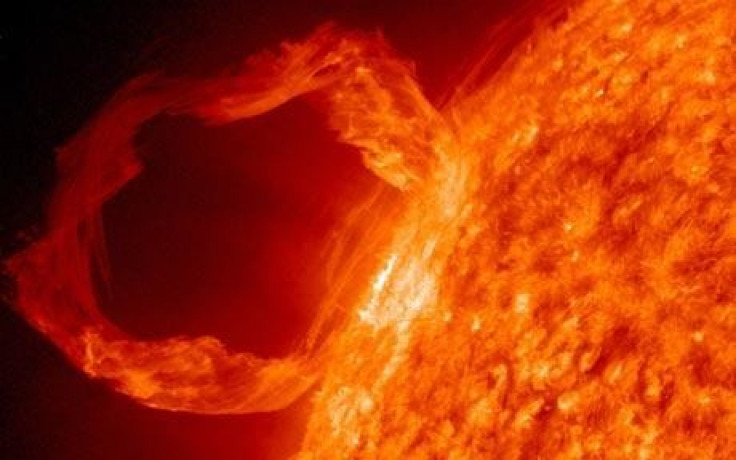Solar Storms Could Cause Power Outages, Scrambled GPS, Communications Failure

Solar storms or the current of charged particles from the sun, in the event of hitting earth, could potentially wreak havoc on the planet causing power outages, scrambled GPS and communications failure. It could leave us in the dark for months together by generating overlapping electrical currents in Earth's magnetosphere.
The solar storms detected about 150 million kilometres away could potentially affect high-voltage transmission lines and cause transformers to overheat which could result in heavy damage.
"The concern is if the electric grid lost a number of transformers during a single storm, replacing them would be difficult and time-consuming," said Rich Lordan, senior technical executive for power delivery and utilization at the Electric Power Research Institute (EPRI), reports National Geographic.
"These power transformers are very big devices, and the lead time to get a replacement can be two months-if there's a spare one stored nearby. If a utility has to order a new one from the manufacturer, it could take six months to up to two years to deliver."
As the scientists are working on improving solar storm predictions' accuracy, electricity operators are developing strategies to hold out against a possible grid outage.
"Geomagnetic storms are low-probability, high-impact events," Lordan said. "When assessing the risk to the grid, one has to ask, What's the level of storm intensity that the grid system should be prepared for?
"Based on the data and the scenarios we can reasonably expect, I believe the power-delivery system can operate through a solar storm."
The solar storm of 1859, also known as the Solar Superstorm, which occurred during solar cycle 10, was the most powerful solar storm in recorded history, and the largest flare, observed by Richard Christopher Carrington.
The geomagnetic storm which occurred during the solar storm period of 1859 disrupted telegraph systems all over Europe and North America. Telegraph pylons threw sparks and telegraph paper spontaneously caught fire. Some telegraph systems appeared to continue to send and receive messages despite having been disconnected from their power supplies, say reports. There have also been reports of brilliant displays of the auroral lights.
Less severe storms have occurred in 1921 and 1960, which resulted in widespread radio disruption.
© Copyright IBTimes 2024. All rights reserved.












